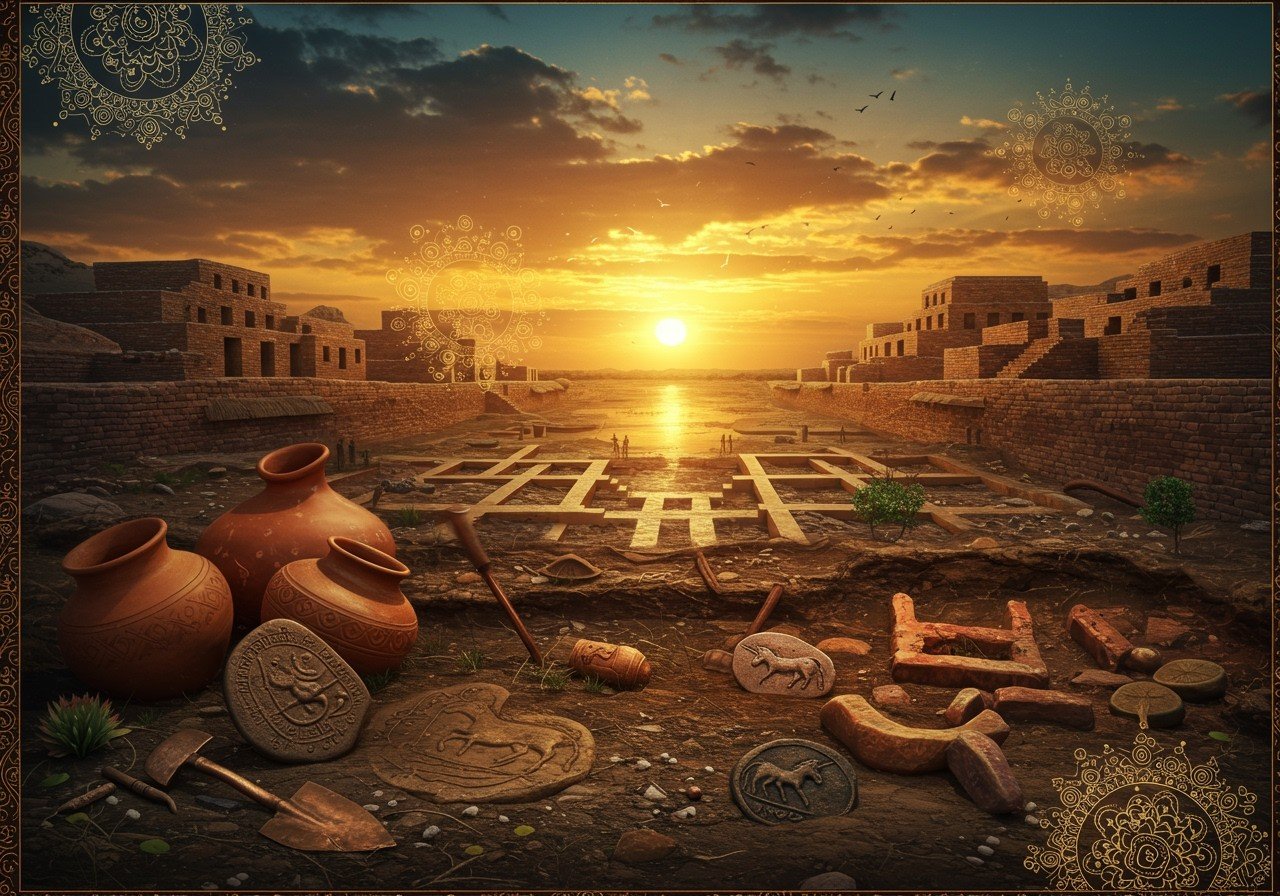
Dive into the ancient heritage of India by exploring Bhirrana, the oldest Harappan site in the country. This blog will uncover the historical significance of Bhirrana, its unique features, and its location, providing a comprehensive understanding of this ancient civilization. Our culturally rooted readers will appreciate the deep exploration of this ancient site, reflecting their interest in tradition and history.
Location and Geography
Bhirrana is situated in the Fatehabad district of Haryana, a state known for its rich cultural heritage. The village lies on the left bank of the now dried-up Saraswati River, which once played a crucial role in the civilization’s development. Understanding the geographical context helps appreciate the site’s strategic importance. The dry, arid plains surrounding Bhirrana have remarkably preserved remnants of the Harappan civilization. The proximity to the Saraswati River indicates the Harappans’ reliance on riverine resources for agriculture and sustenance.
Historical Significance
Bhirrana holds the distinction of being the oldest Harappan site in India, with evidence dating back to 7570-6200 BCE. This site offers valuable insights into both the pre-urban and urban phases of the Harappan civilization. Archaeological excavations at Bhirrana reveal continuous habitation from the early Harappan phase through the mature Harappan phase. Discoveries such as pottery, tools, and ornaments indicate a sophisticated level of craftsmanship. The site’s layout, including well-planned streets and drainage systems, showcases advanced urban planning. Artifacts also suggest trade and cultural exchanges with other contemporary civilizations.
Archaeological Discoveries
Extensive excavations at Bhirrana have unearthed numerous artifacts illuminating the daily lives of the Harappan people. Pottery fragments showcase intricate designs and craftsmanship, indicating a rich tradition of ceramic art. Tools and implements made from stone and metal reveal technological advancements. The discovery of beads crafted from semi-precious stones suggests the importance of personal adornment in Harappan culture. Structural remains, including houses and granaries, provide insights into architectural practices. Evidence of a well-developed drainage system highlights the emphasis on sanitation and public health. Agricultural tools and seeds confirm an agrarian society.
Cultural and Societal Insights
Artifacts and structural remains at Bhirrana offer a glimpse into the cultural and societal norms of the Harappan people. Pottery designs reflect artistic sensibilities and may have held symbolic or ritualistic significance. Beads and ornaments suggest that personal adornment and aesthetics were important. The layout of residential areas indicates a community-oriented lifestyle with shared spaces and facilities. The presence of granaries points to the collective storage and distribution of food resources, demonstrating a well-organized society that valued cooperation and planning. The advanced drainage system reflects the community’s focus on hygiene and public health, indicating an awareness of cleanliness and disease prevention. The diversity of artifacts suggests trade interactions with other contemporary cultures, highlighting Bhirrana’s role in a wider network of ancient civilizations.
Preservation and Visitor Experience
The Archaeological Survey of India (ASI) is actively working to preserve and protect Bhirrana for future generations. They are taking steps to ensure the site’s integrity and prevent damage. Visitors can explore the site and view excavated artifacts, gaining a deeper understanding of the Harappan civilization. Informational plaques and guided tours provide context and historical background, enhancing the visitor experience. The site offers a unique opportunity for educational trips, allowing students and history enthusiasts to connect with ancient heritage. Local authorities are improving infrastructure and accessibility to facilitate tourism. Responsible tourism practices are encouraged to ensure preservation while allowing public engagement. Visiting Bhirrana is like stepping back in time, offering a tangible connection to our shared history.
Connecting with Ancient Heritage through Poojn.in
Poojn.in, India’s largest Dashakarma bhandar, connects you with India’s ancient heritage through authentic Ayurvedic and traditional products. As you explore Bhirrana’s rich history, discover traditional wellness items that have been part of Indian culture for millennia. For those interested in traditional Ayurvedic herbs, Poojn.in offers Chirayata (चिरायता), also known as Chirata, used in traditional medicine since ancient times. This herb, native to the Himalayan region, represents the continuity of India’s ancient knowledge. At Poojn.in, you can find:
- Pure and authentic Chirayata for traditional wellness practices, sourced directly from the Himalayas.
- Carefully sourced herbs from reliable suppliers, ensuring quality and authenticity.
- Quality-checked traditional products, adhering to strict standards for purity.
- Convenient online ordering and delivery, making traditional products easily accessible.
- Expert guidance on traditional items and their uses, helping you connect with ancient practices.
Poojn.in maintains the authenticity of traditional products while making them readily available through modern e-commerce. This bridges the gap between ancient practices and contemporary needs, much like Bhirrana connects us to our ancient civilization.
Conclusion
Exploring Bhirrana offers a unique glimpse into India’s ancient past and the rich tapestry of the Harappan civilization. The artifacts and structural remains tell compelling stories of a sophisticated society. Preservation efforts by the ASI ensure that this historical treasure is protected. Visiting Bhirrana is more than just a trip; it’s a journey into our collective history. The site provides an educational and humbling experience for everyone. As you walk through the remnants of this ancient civilization, you gain a deeper understanding and respect for the people who once thrived here. By supporting responsible tourism and preservation efforts, we can all contribute to maintaining Bhirrana’s integrity. Plan your visit, immerse yourself in the history, and gain valuable insights into one of India’s oldest civilizations.


